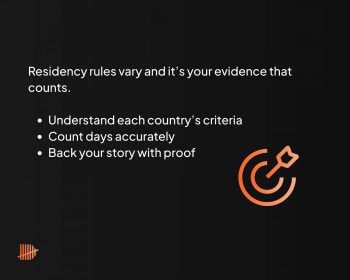For Monaco Family Offices seeking to elevate their compliance strategy, here are several actionable steps to reduce risk and maintain defensible records across jurisdictions:
1. Establish Jurisdiction-Specific Rulesets
Start by identifying the relevant tax rules for each country your clients are connected to. For example, the UK uses a multi-factor Statutory Residence Test, while Switzerland relies more on habitual residence. Build individualised day count thresholds around each jurisdiction’s criteria.
Take our Tax Residency Risk Score Assessment for a clear view of current exposure to risks. In under five minutes, you’ll get a tailored overview of your situation and readiness.
2. Implement Real-Time Day Logging
Replace manual spreadsheets with an automated day counting solution. The best tools log day counts via smartphone data, timestamped movement, and geolocation. This reduces human error and provides evidence that holds up under scrutiny.
3. Create a Tax Compliance Calendar
Include key thresholds, deadlines, and “high-risk” periods based on client travel habits. For example, if a client typically spends summers in France, create calendar flags to monitor proximity to the 183-day mark or centre-of-interest concerns.
4. Maintain Supporting Evidence
Encourage clients to add supplementary materials to their travel data—boarding passes, hotel receipts, meeting invitations, or even geo-tagged images. This triangulation adds credibility and supports your case during an audit.
5. Run Quarterly Internal Audits
Don’t wait for a tax enquiry to assess risk. Conduct internal reviews of day counts and flags for potential exposure, especially after major events (e.g. family relocations, property purchases, or extended stays abroad).
Proactive day counting isn’t about micromanaging travel. It’s about giving families the freedom to move without compromising their tax status.










